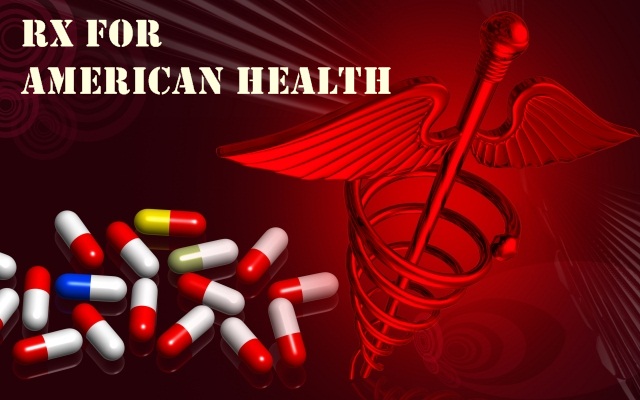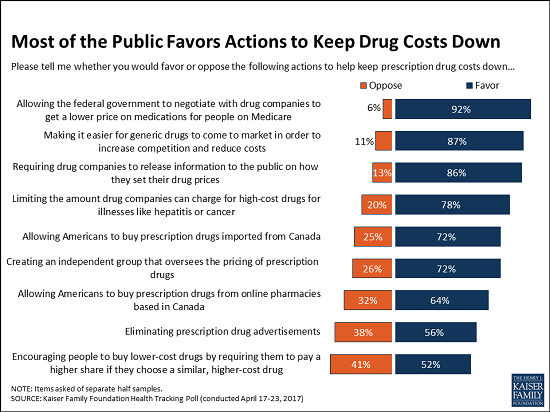The publisher of RxforAmericanHealth says that the Department of
Human and Health Services (HHS) and National Institute of Health (NIH) must act
to define standards for implementation of ‘march-in’ rights to help lower
prescription medicine prices.
 In an open letter to Secretary Sylvia Burwell posted on
RxforAmericanHealth, Daniel Hines says such action coupled with other initiatives
including price negotiation for medicines, reciprocal Memorandums of Understanding
between regulatory agencies of Tier One Countries as validation of the safety
and efficacy of the oversight of personally imported medicines from those
countries, criminal penalties for abuse of pricing practices based on a ‘what
the traffic will bear’ philosophy, greater transparency in Pharma pricing
practices, and an end to direct-to- consumer advertising for prescription
medicines, will ensure a ‘stakeholder’ role for the American public that
supports so much of Pharma R&D, by an increased presence of consumers, advocates and private citizens in policy
development and hearings.
In an open letter to Secretary Sylvia Burwell posted on
RxforAmericanHealth, Daniel Hines says such action coupled with other initiatives
including price negotiation for medicines, reciprocal Memorandums of Understanding
between regulatory agencies of Tier One Countries as validation of the safety
and efficacy of the oversight of personally imported medicines from those
countries, criminal penalties for abuse of pricing practices based on a ‘what
the traffic will bear’ philosophy, greater transparency in Pharma pricing
practices, and an end to direct-to- consumer advertising for prescription
medicines, will ensure a ‘stakeholder’ role for the American public that
supports so much of Pharma R&D, by an increased presence of consumers, advocates and private citizens in policy
development and hearings.
He notes that HHS Secretary Burwell recently denied a request from
50 members of Congress to implement march-in provisions leading to a number of
Senators joining in support of the request aimed at cost increases of the
Cancer drug Xtandi.
“While this issue has surfaced again as a request for similar
action from even more Congressmen and advocacy groups regarding the Xtandi
patent, it is the failure of HHS and NIH to face up to their responsibilities
to take action in the public interest that is the greater concern,” Hines
explains.
He says the “requests themselves are an exercise of the
authority of Congress, as they are based upon long-standing (30 years) existing
legislation that makes it evident that it is incumbent upon the agencies to
take action when Congress believes it is appropriate.”
He cites a number of reasons in support of his contention:
· The function of the
Health and Human Services is to ostensibly protect the health and well-being of
Americans, while the National Institute of Health is the primary agency of the
United States government responsible for biomedical and health-related
research.
· A major responsibility
of each is that is must address not only the safety and efficacy of medicines,
but their availability as well since if a medicine is unavailable for any
reason it creates a health care crisis for those patients who are derived of
the potential benefit of the denied medicine;
· As the
Congressional letter notes: ‘march-in rights’ should be asserted
under 35 U.S.C. § (203) (a)(2) “when action is necessary to alleviate health
and safety needs are not being reasonably satisfied” or “benefits of a patented
product are not available to the public on reasonable terms”;
· The current pricing
crisis of vital medicines clearly not only do not ‘reasonably’ alleviate
health and safety needs of Americans, but are actually contributing to
endangering the health of patients who are denied the benefits of access to the
benefits to be derived from a regimen of vital medicines;
· Likewise, this
means that the “benefits” of a patented medicine are not available to the
public since a product that is unaffordable is, in and of itself, unavailable
and is “not available to the public on reasonable terms”;
· The linchpin for
implementation of ‘march in’ action is the definition of ‘extraordinary
circumstances’. Webster’s defines extraordinary as unusual or different
from the usual. We can only hope that so many Americans being denied
access to unaffordable medicines, the disastrous burden upon individual health,
outrageous price increases over the past few years, and Direct-to-Consumer
advertising of medicines that exceeds pharmaceutical industry research and
development, are not considered to be usual, and that, instead, an
‘extraordinary’ situation does indeed exist.
“This places the responsibility upon HHS and NIH not to decide
whether a circumstance is ‘extraordinary’ based upon personal whim and
observation, devoid of any factual studies that represent standards,” Hines
says.
“With that in mind, we urge steps be taken to clearly define standards
that would constitute an ‘extraordinary’ situation, not only for higher-priced
specialty medicines but for vital lower-priced maintenance prescriptions that
have been priced beyond the reach of untold numbers of Americans leading to
adverse health complications.”





